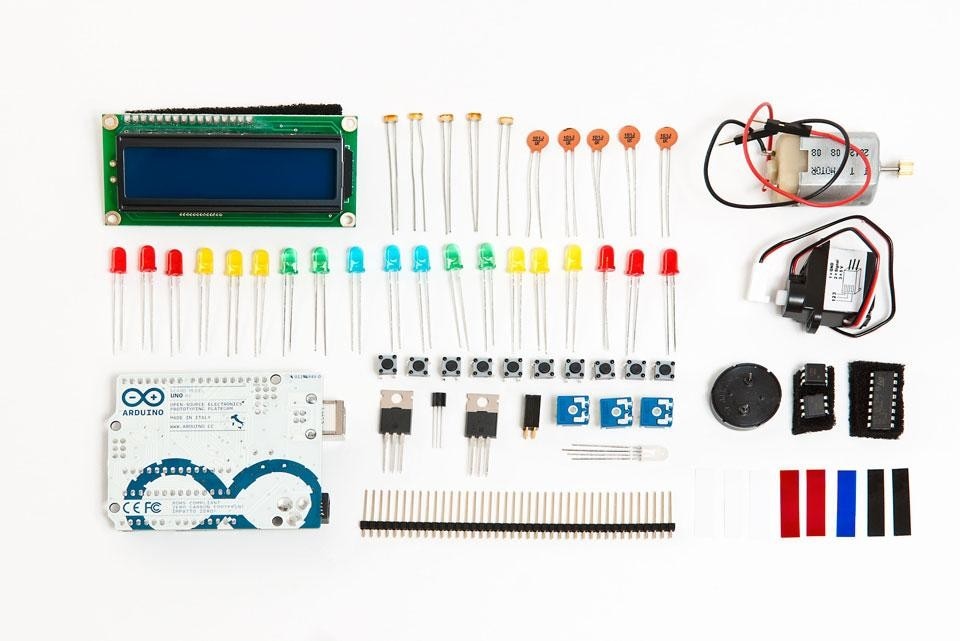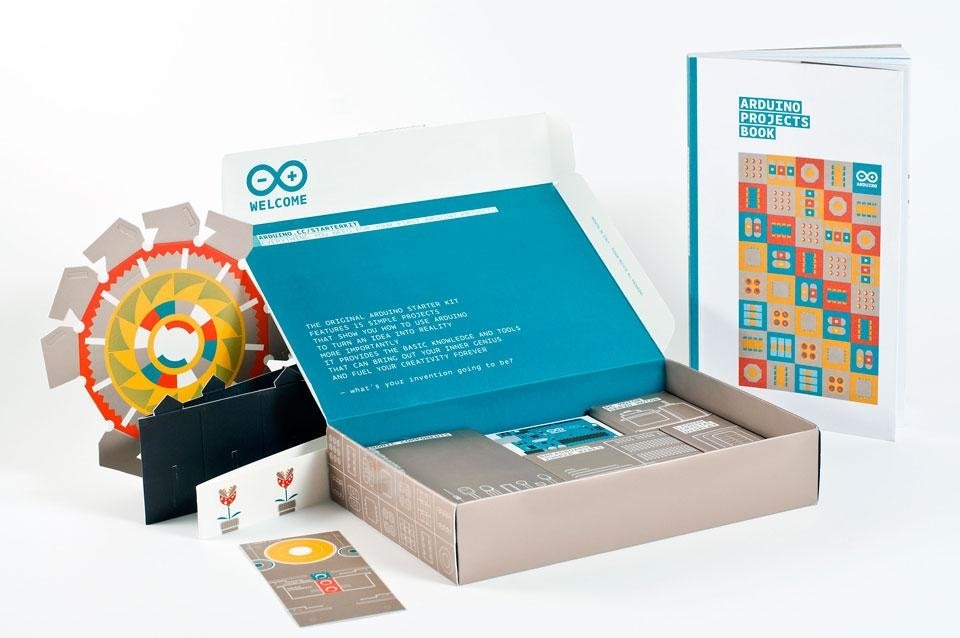I use this brief premise to say how surprised I was when I opened my Arduino Starter Kit. My entire childhood universe of small pieces and coloured wires finally had a name and an order. The toy I always wanted had finally arrived, but this time it was already disassembled. I remembered how much I liked to try to understand the innards of radios and then, with my imagination, transform the electronic components into artificial insects.
The box (to call it packaging would be extremely reductive) contains a book (a users' manual) and electronic parts contained in other small boxes that interlock inside the box like a tangram puzzle. There is an LCD display, a small motor, a bag with electronic components (capacitors, diodes, resistors, potentiometers, transistors, and various kinds of sensors), a USB cable, wires for a bridge circuit, and of course an Arduino Uno that is no more than a microcontroller or, in other words, a simplified computer conceived so that we can tell it how to interact with the other sensors, components (at least that's what the instructions say) and the pieces of cardboard which I still don't understand.
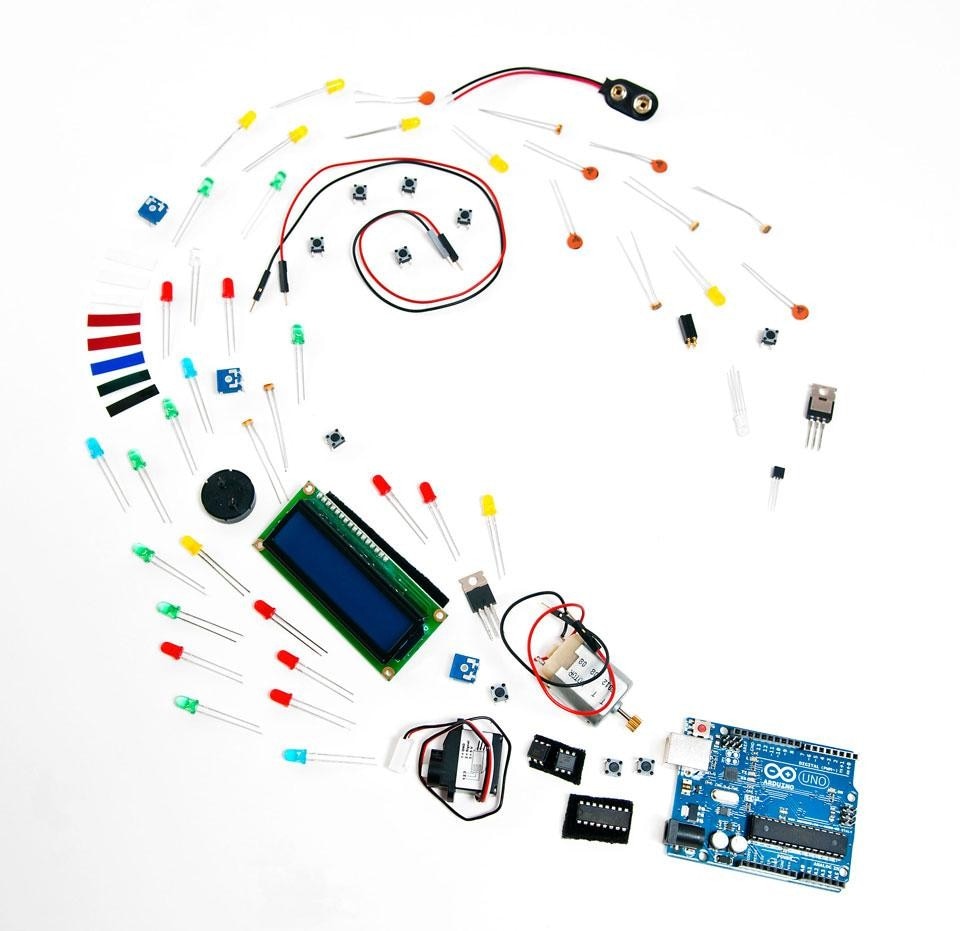

I had a true revelation when I leafed through the first few pages of the manual
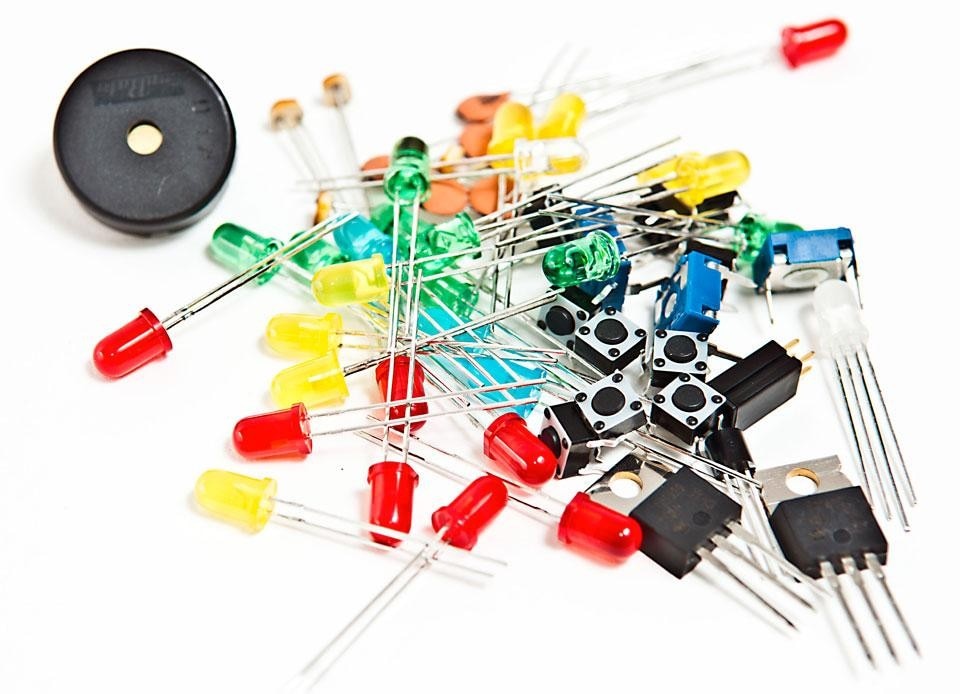
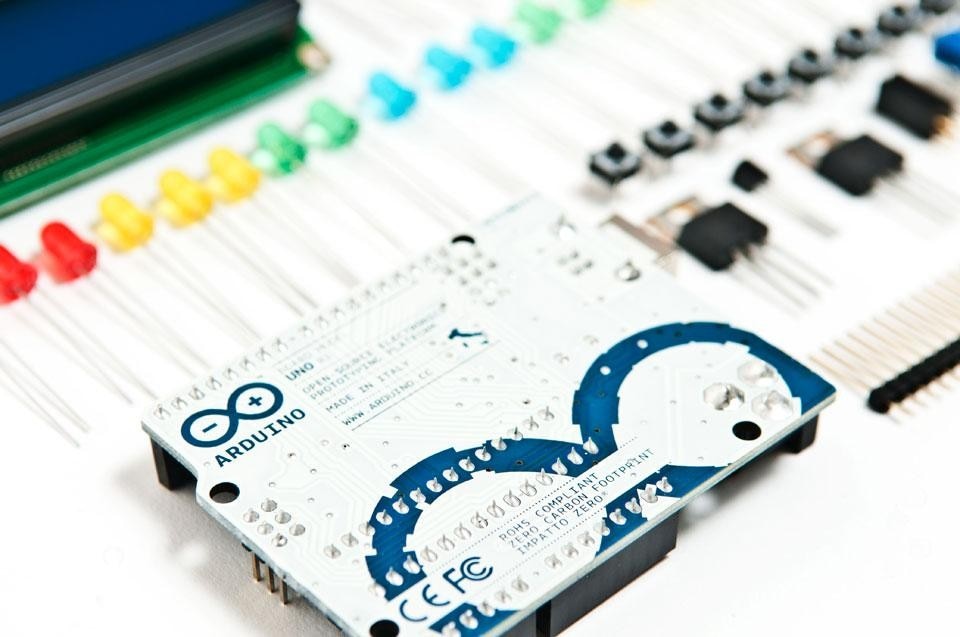
Photos by Monica Tarocco.
